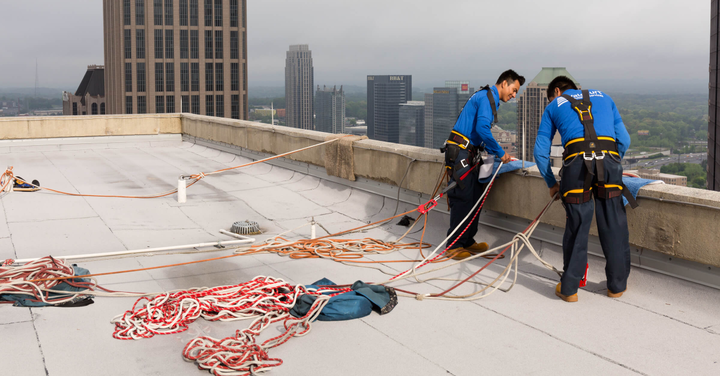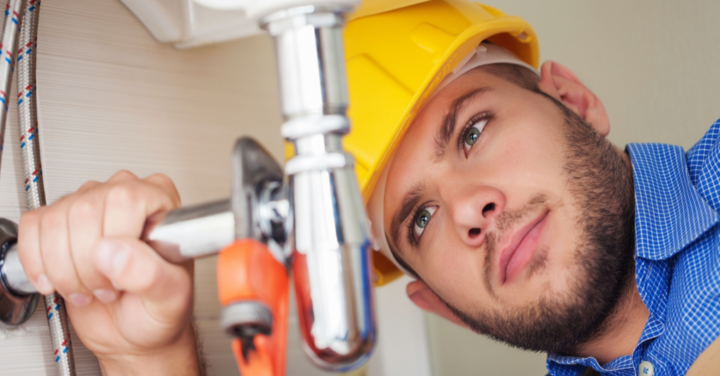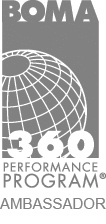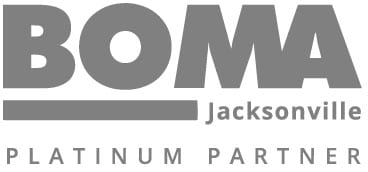All manner of roof work and exterior work can present safety risks as part of on-demand building repair work. The simple task of replacing shingles, tarps, or washing windows on a four-story building can result in a fatal fall. Something as seemingly innocent as a strong gust of wind can lead to a trip and fall from a roof, scaffolding, or other precarious perches.
An example of this was on a terrifying display in Florida in December 2021 when workers cleaning a high-rise building were left hanging high in the air. A partial scaffolding collapse at Hallandale Beach High Rise saw two workers rescued after dangling from their harness lifelines. Both workers escaped severe injury due to the harness and anchor systems that were up to code and operational.
Regulations passed and updated by OSHA regarding standards for fall protection help ensure workers have as safe a work environment as possible. Employers must provide adequate safety gear and equipment and ensure commercial buildings get appropriately outfitted with a roof anchor system. Falls are one of the leading causes of traumatic and fatal workplace injuries in the United States. However, adequately utilized roof anchors and an up-to-date fall protection system can significantly reduce these risks and eliminate fall injuries and deaths.
What are Rooftop Anchors?
Rooftop anchors are straightforward yet vital components of any high-rise building safety system. They help establish rooftop anchor systems and fall prevention methods that offer enhanced fall protection and increase the safety of your building. It is essential to conduct rooftop anchor inspections and meet regulations and various certifications so any commercial property is compliant and free from liability should something go wrong.
As OSHA training materials on fall prevention highlighted, “Preventing falls can mean the difference between life and death. Hundreds of workers die from falls each year. [Mangamenet] can prevent such deaths by planning to get the job done safely, providing the right fall protection equipment, and training all workers to use the equipment safely. ….Workers perform tasks at a height that requires protection from fall hazards. Having a serious injury or death occur at work affects everyone at a worksite. A fall can occur in a split second without any time for the worker to react.” Rooftop anchor systems help prevent severe injury and death from falls from heights during maintenance and repair work on high-rise commercial buildings.
The importance of risk management practices, appropriate gear, and reliable equipment in rooftop work is evident. Simple things like roof anchors, safety harnesses, and lead lines can make all the difference in whether or not a slip and fall or a structural issue end in severe injury or death. Something as simple as ensuring workers wear a harness and lead securely tied to a fall arrest system anchor can keep a worker from falling to their death.
However, as vital and mandatory as these safety features are, sometimes employers are tempted to cut corners and skirt some safety protocols. Employers must pay for this equipment and ensure the gear is appropriate for the individual worker. Every employee will need a suitable fall prevention setup; no cookie-cutter approach will do. Facility management supervisors must also ensure the proper setup and the fall prevention system remains appropriately maintained and compliant with all safety laws and regulations. This requirement can be a lot to manage. However, understanding the value of rooftop anchors and how they prevent falls/serious injuries makes it easier to absorb those expenses and keep workers safe when they leave the ground.
What Does a Roof Anchor Look Like?
At first glance, roof anchors seem simplistic, and in theory, they are. Most are simply a basic post with a u-bar attached to the top. However, looks can be deceiving, and when it comes to roof anchors, these metal posts are what stand between a worker from surviving a fall or getting killed. Several factors must come into play when designing and manufacturing a roof anchor. Worker weight, use and location, and workplace applications all impact what style, size, and design anchors are best suited for any building or use.
What is a Roof Anchor Used For?
Rooftop anchors are a vital part of a building’s fall protection system and usually come standard on any skyscraper or high-rise roof system. Anchor points are commonly found on the roof and are used to connect lanyards, lifelines, and other forms of tie-offs. Sometimes, additional anchors are required to accommodate workers and other systems such as scaffolding, lifts, and other equipment. The same anchor that would work for roof repair might not necessarily be the best for window washing or facade repair work. Likewise, a worker who is six foot six would need a different harness and fall prevention setup than a coworker who is only five foot three. Knowing proper anchor system usage is closely tied to matching the right approach to the right team member.
Methods of Creating an Anchor Point
When looking at fall prevention systems setups for high-rise repair and maintenance work, there are three basic ways to make an anchor point to accommodate required commercial building maintenance work.
1. Using a Jamb Anchor
This anchor point often mounts on a work area’s window frame or doorframe. They are easy to install and function in other areas where similar applications are possible. These are simple to obtain and install but are bulky and somewhat difficult to move.
2. Using a Sling
A polyester web strap—often called a Pass-Thru anchor or strap—can help secure workers during high-rise building work. These commonly use fixed points such as a rafter, a chimney, crossbar, I-Beam, or other solid and approved anchor access points.
3. Using Fixed Points
Numerous fixed anchor points exist in construction, repair, maintenance, and commercial building upkeep. These styles are safe and readily available, making them the most common and accessible of today’s fall prevention anchor systems.
What Are Roof Anchor Systems?
How many anchor systems are there, and how can anyone tell which one is best? These are common questions many facility managers have when it comes to addressing fall risks and ensuring proper safety system, anchor points, and personal safety equipment is available to all workers. There are three basic types of anchor systems for fall protection:
- Designed Fixed Support – load-rated anchors specifically designed and permanently installed with the explicit intention of use with fall prevention and safety system setups.
- Temporary Fixed Support – anchor systems that connect to the structure according to the approved fixation process and using only certified safety materials.
- Existing Structural Features or Equipment – locations not intended as anchor points but verified as having adequate capacity to serve as safe and anchor points for a time.
How Many Anchor Points Are Necessary?
This question comes up frequently among facility management teams and work staff. There is no one size fits all answer. Minimum numbers of anchor access and fall prevention points depend on several factors. Anchor locations must help reduce the risk of a worker hookup becoming suspended by their harness and lines or from flashing into walls, commercial glass windows, or other structures. The ultimate goal should be to keep workers on the roof, scaffolding, lifts, and other solid footings.
A swing over the roof’s edge creates an entirely different set of challenges and an urgent rescue timeline. Suspension trauma is a real thing. Depending on how the worker falls and is left hanging and how long they are handing for, injuries can range from internal bleeding, breathing difficulties, spinal injuries, and more. Utilamntely, it is meant to be a fall prevention system. Saving a worker from hitting the ground is well and good, but keeping them from falling off any structure, to begin with, is the number one priority when considering commercial maintenance tips.
Determining how many anchor points are necessary depends on how facility manners answer one question: How many anchors will it take to immediately and safely perform the task of the day? The number deemed necessary to ensure worker safety, reasonably accommodate work, and provide a safe work environment is the minimum that should be available at any time.
Anchor System Types — Sub Categories to Know
Anchor points as a whole fall into these even more specified classifications, which can further assist building management teams in selecting the proper setup for any commercial high-rise safety and fall prevention needs:
- Non-Engineered – Simply put, non-engineered anchors have not undergone manufacturing or inspection by a qualified person. These anchor points may include attachment points installed after the fact to existing structures such as roofs, ledges, facades, and other appropriate attachment points. They must meet OSHA’s 5,000-pound weight-bearing requirement and be carefully examined before each use to ensure they are in good working order and have no signs of wear and tear.
- Engineered – These anchor points come installed specifically for fall protection and get installed as part of the original building plan and creation. They meet all safety requirements and regulations and should also be routinely checked and inspected along with all other safety system components.
- Permanent – As their name suggests, you cannot move permanent anchor points. These fixtures can be non-engineered or engineered depending on when and how they got installed initially. They’re fixed permanently into the existing setup.
- Portable – Portable anchor points are versatile and suitable for work on buildings that are either not very regular or require a lot of movement and relating during work. They can be set up quickly and easily and are ideal for temporary jobs or sites with hazards in multiple locations. Portable anchors and mare to support standard weight limits and can change location without damaging surrounding structures.
Regardless of anchor point setup and installation, regular maintenance and inspections ensure that workers remain safe. Professional roof anchors and safety support teams will regularly check the system and analyze the current status fall protection system to improve the safety of any high-rise commercial building.
What is Rooftop Anchorage System Assessment?
A compliant rooftop anchorage system requires all commercial and high-rise residential buildings to remain up to code. They remain vital for ensuring workers’ safety when utilizing façade access systems to complete facility maintenance and repairs. Unfortunately, safety measures are often the first to be overlooked and neglected. Corners get cut, pennies pinched, and workers’ lives put at risk.
Today, most commercial high-rise buildings are currently non-compliant, even if existing anchors have been previously inspected and certified. A one-time check is insufficient to keep fall prevention systems in good working order. Rooftop anchorage inspections and safety checks must occur regularly by industry leaders like Valcourt. At a bare minimum, workers should inspect all anchor points and system components before they get used. Routine inspections by certified safety experts also should be part of regular facility management and upkeep for all systems used for face repair, window washing, waterproofing, and other risky repairs and maintenance work.
Working with industry experts with a proven track record for quality, safety, and reliability can ensure roof anchor systems are code compliant and suited for use. The time and money invested in fall prevention system installation and upkeep is well worth it compared to the cost of workers’ compensation and injury claims, or worse, a wrongful death lawsuit. Working with Valcourt facility management and safety experts can ensure every commercial property is up to code and appropriate.
Roof Anchors for Fall Protection: The Legislation Requirements
Valcourt’s expert service team has the expertise to keep commercial facilities and property sites up to code and maintain 100% compliance. A skilled and experienced team of professionals will assess the existing anchor system and certifications to identify any areas needing further analysis or updating. All work done is according to OSHA and other safety standards and requirements concerning accessible and adequate safety gear and well-maintained equipment and structures.
As highlighted by Diversified Fall Protection, “There are two paths to OSHA compliance when it comes to fall protection anchorage: OSHA 1910.140(c) (13)(i) states that anchors “shall be…capable of supporting at least 5,000 pounds (22.2 kN) per employee attached.” OSHA 1910.140(c) (13)(ii) specifies that anchors shall be “Designed, installed, and used, under the supervision of qualified person, as part of a complete personal fall protection system that maintains a safety factor of at least two.…” Valcourt safety inspection experts will ensure all anchor points and fall prevention components are up to code, properly installed, well-maintained, and safe for use.
How Should You Choose an Anchor Point?
The safest option is the most desirable when choosing a fall protection anchorage. If an engineered system is available, it should be used over any non-engineered anchor point. Temporary anchor points are better than nothing. Any viable anchor point must be certified by someone who knows or can determine the load capacity and overall structural integrity of that anchor point.
Knowing and avoiding unsafe anchor points improves the chance of a safe and appropriate fall prevention setup. The following points should never become anchor sites with any high-rise, parking garage, or other commercial structure:
- Standard guardrails
- Ladders, rungs,
- Scaffolding
- Light fixtures
- Plumbing
- Conduit and wiring harnesses
- Ductwork and pipe vents
- Rebar
- Lanyards
- Handrails
- Vents and fans
- Roof stacks
It is essential never to use structures or items that fail to meet OSHA standards. Doing so could be just as dangerous as not using anything at all. But all these worries and concerns fall to the wayside when you have an expert team of fall prevention and safety experts, like Valcourt, working for you and with you every step.
Contact Valcourt Building Services for Roof Anchor Fall Protection Services and Inspections
Valcourt Building Services works with building owners and property managers to provide preventative maintenance, leak repairs, safety consulting, facility management and maintenance, and comprehensive building envelope restorations to extend the life of a structure and protect property value. Contact A1orange today to learn more and to ensure your rooftop fall protection setup is up to par.








